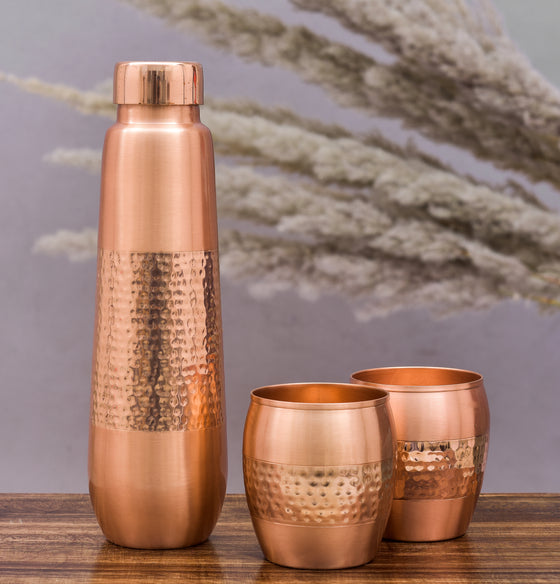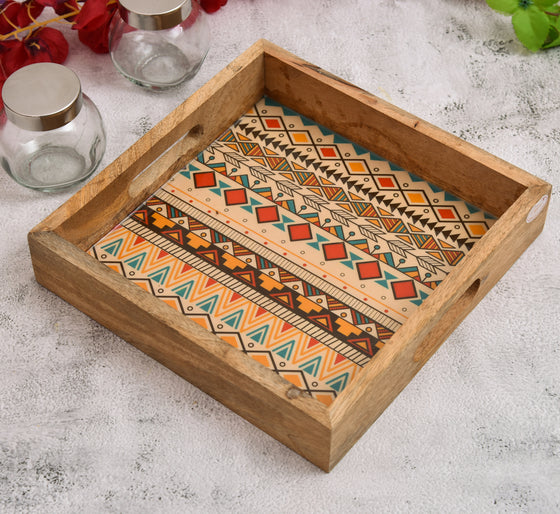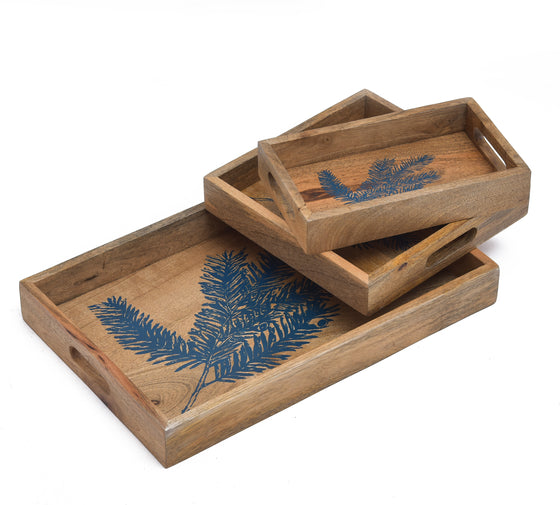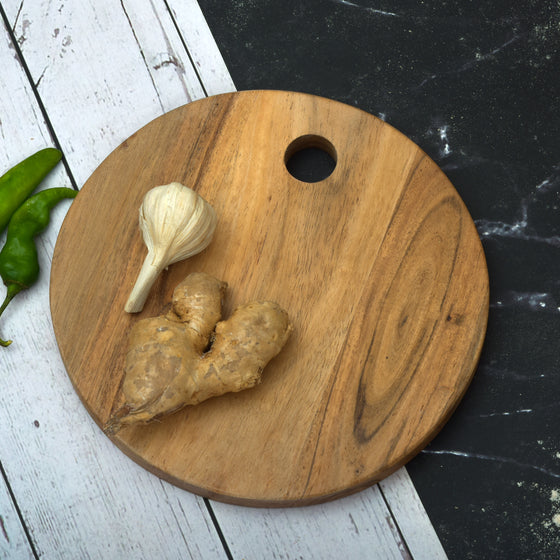How to Take Care of Your Wooden Utensils During Winter

As soon as winter arrives, the air becomes crisp. During this time, your skin is not the only part to feel the winter dryness; your wooden utensils share the same experience. Be it a favourite acacia wooden spatula, your treasured wooden cutting board, or your printed wooden tray, winter takes the natural oils from them, making them dry, hard, and prone to cracking.
But the good news is, a small seasonal care will allow you to keep your woodenware shining with a long-lasting and safe to use throughout the year. This guide will tell you how to take care of your Wooden Utensils during winter.
Why Winter Is Harsh on Wooden Utensils
During winter, the air is crisp, so wooden utensils take more time to air dry. Wood is a natural material that responds to the environment. Here's what happens:
-
Dry atmosphere draws moisture away from the grain.
-
Washed wooden products often get stripped of their natural oils, which provide protection to the wood.
- During winter, warm water can be used to open up wood pores quickly than normal.
If not cared for, this leads to:
-
Cracks.
-
Rough texture.
-
Warping.
-
Foul smells.
-
Dull appearance.
- Shorter lifespan.
1. Wash Gently — Winter Is Not the Time for Harsh Cleaning
Avoid these winter mistakes:
Do Not Use Boiling Water
Hot water may be comfortable in the cold weather, but to wood, it is too rough. It opens the pores, giving way to detergent seepage and moisture loss.
Don’t Soak for Long
If you soak wooden spatulas or spoons in water, even a few times (10-15 minutes), it can render them weak.
Do This Instead
-
Use lukewarm water.
-
Use mild dish soap.
-
Wipe, using a soft cloth or scrub.
- Wipe completely with a soft towel.
2. Moisturizing Is Mandatory in Winter (Just Like Your Skin!)
It is the key to wooden utensils that stand the test of time; they should be oiled on a regular basis.
Which Oils to Use?
Use food-safe oils:
-
Mineral oil (best and long-lasting).
-
Coconut oil.
-
Walnut oil.
-
Linseed oil.
- Beeswax + mineral oil blend (top-tier protection).
Oils that go rancid, such as mustard or vegetable oils, should be avoided.
Wooden Utensils: Instruction on how to oil wood.
-
Wipe and dry the wooden utensil thoroughly.
-
Heat oil over (lukewarm, but not hot).
-
Special care with soft cotton.
-
Allow to rest 4-12 hours (it is best to do it overnight).
-
Wipe off excess oil.
Winter Rule:
Oil up your wooden kitchenware after every 10-15 days (rather than after every month).
3. Keep Them Away from Winter’s Biggest Enemy: Heat
The relationship between wood and heat is a complicated one.
During winter, we tend to:
-
Keep utensils near the stove,
-
Dry them on hot cooktops,
- Place them close to heaters.
This literally distorts and breaks them.
Winter Woodenware Safety Tips
-
Do not put your utensils on hot lids or pans.
-
Do not leave them in containers near heat.
-
Do not dry them in the sun.
- Do not put them in the dishwasher: winter or any season!
4. Proper Drying is More Important in Winter
The humidity is low, thus wood dries rapidly, but unevenly. Lack of dryness in every part results in cracks.
Safe Drying Steps
-
Wipe with a cotton towel after the wash.
-
Lay them on a rack to dry in the air.
-
Let air hyphenate at all points.
- Don't stack them while wet.
Pro tip: Put wooden chopping boards on their sides to dry without the trapped moisture.
5. Remove Winter Odours Naturally
Wood may hold on to smells due to winter, since when it is cold, the pores close.
To Deodorize:
-
Rub with lemon + coarse salt.
-
Leave for 10 minutes.
-
Rinse with lukewarm water.
-
Dry completely.
- Oil afterward.
This not only kills odour, but also rejuvenates the wooden surface.
6. Protect From Mold — Yes, It Can Happen in Winter
The winter appears to be dry, and the kitchen is more humid as it boils water, cooks using steam and has closed windows.
The blend can retard the moulding of wood.
How to Prevent Mold
-
Wooden utensils should never be placed in a closed drawer when wet.
-
Store them in an open container in the air.
-
Before storing, make sure that they are absolutely dry.
- To establish a natural barrier, oil is applied frequently.
In case of the mold, wipe with vinegar + water, dry, and wipe with oil.
7. Rotate Usage — Don’t Overwork Your Favourites
One of the favourite wooden serving bowls is used for everything in most houses.
But during winter, overuse can:
-
Wear out the surface quickly.
- Speed up drying, which causes cracks.
8. Storage Matters More Than You Think
The silent warrior in winter care is good storage.
Best Winter Storage Ideas
-
Apply an airflow open holder.
-
Metal containers (which get cold and draw moisture out of wood) should be avoided.
-
Wood must not be placed near cold windows and moist corners.
- Do not keep them together with wet steel utensils.
In the very cold weather, place wooden utensils that are not used in a cotton cloth to avoid over-drying.
9. Give Your Utensils a Winter Spa Treatment
After every month in winter, take your wooden knives, etc., through a complete winter spa:
Mini Winter Spa Routine:
-
Deep-clean with lemon + salt.
-
Rinse with lukewarm water.
-
Air dry fully.
-
Apply warm oil generously.
-
Let it rest overnight.
-
Buff with a soft cloth.
Your wooden utensils will be as new, smooth, shiny, and nourished.
10. Replace When Necessary (A Gentle Reminder)
If a wooden utensil has:
-
Deep cracks
-
Flakes or splinters
-
Mold inside the grain
- A fuzzy texture after repeated use
It’s time to say goodbye.
Broken wooden utensils are not safe when it comes to food.
Final Thoughts: Winter Can Be Harsh, but Wood Can Stay Beautiful
Wood utensils are not tools, but rather natural, sustainable and cozy items in your kitchen. It takes some extra attention in winter to ensure that they last years, preserve the beauty and be hygienic and safe.
This winter, handle your printed wooden tray as tenderly as you do your skin: Soft cleaning, frequent moistening and shielding against the severe weather.
Frequently Asked Questions (FAQs)
1. How often should I oil my wooden utensils in winter?
During winter, you should at least oil your wooden utensils every 10 to 15 days. Because of the dry air, it removes the natural moisture of utensils faster.
2. Which oil is best for wooden utensils?
The food-grade mineral oil is best for oiling wooden utensils. You can also consider coconut oil, walnut oil, linseed oil, or a beeswax-mineral oil blend.
3. Can wooden utensils crack during winter?
Yes, it is possible that wooden utensils may crack during winter. The winter dryness pulls moisture out of wood. These problems cause our wooden utensils to crack.
4. How do I remove smells from wooden spoons or trays?
If you smell a strange smell coming from your wooden spoons or wooden trays, it is suggested to scrub them with lemon juice + coarse salt, then let them rest for at least 10 minutes, rinse them with lukewarm water, wipe them with a cloth and dry them, and the last step is to oil them.
5. Is it safe to wash wooden utensils with hot water in winter?
No, it is unsafe to wash your wooden utensils with hot water in winter. Hot water opens the pores, which enables moisture to enter the utensil, causing detergent absorption and faster drying. These all conditions lead to damage. Always use lukewarm water to wash your wooden utensils.

















